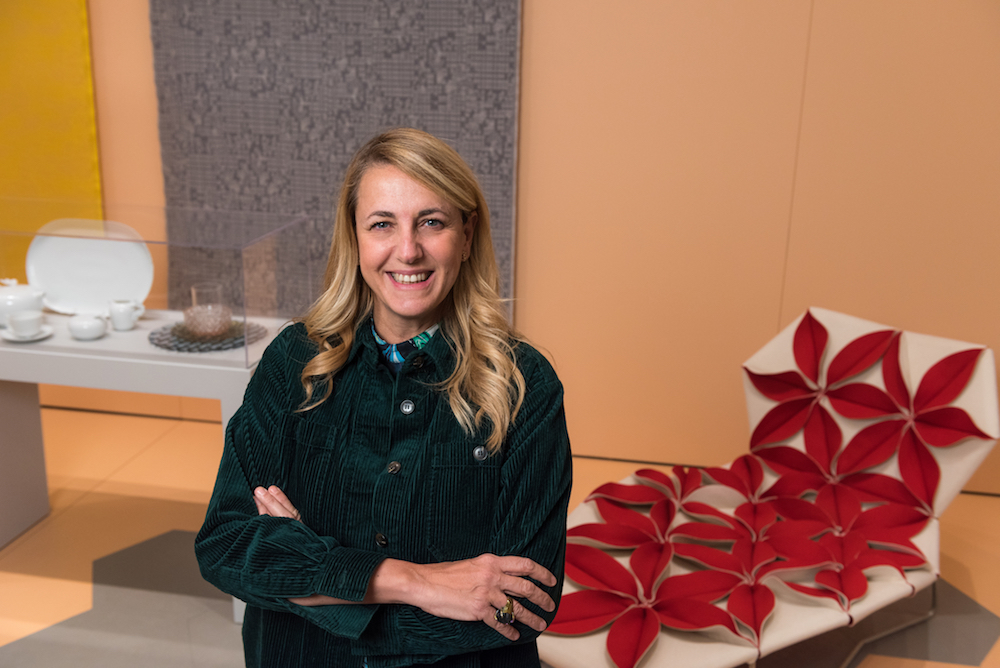
Last week, Spanish designer Patricia Urquiola was awarded the Design Excellence Award from Collab, an affiliate group of the Philadelphia Museum of Art, in conjunction with the opening of the first solo exhibition of her work. Known for her inventive and playful approach to both architecture and design, Urquiola shared her experiences studying under Achille Castiglioni, integrating new technologies, designing self-driving cars, and working with virtual reality for Milan Design Week 2018.

Early Years
“What can I say? I’ve been very lucky. I studied architecture in Madrid and then moved to Milan to attend the Polytechnic University, which was outside of my comfort zone as an architect. Many of the teachers there were also working designers and they were the most interesting people: Vico Magistretti, Achille Castiglioni, Maddalena De Padova, and many others. It was an incredible time to be in Milan. They were all so generous, Vico in particular had a way of taking energy from everyone and putting it all together.”
Design and Technology
“Technology is absolutely an advantage. Since opening my studio in 2000, technology has changed so much—not only in terms of communication, but how it lets us mix technology and craft. For Salone del Mobile I am doing a virtual reality project in my studio, which of course will not be physical. But, even when I am designing physical things like furniture, light fixtures, and kitchen appliances, it has all evolved to be connected in some way to computers. We should always be open-minded. It doesn’t mean losing a curiosity for things that are crafted, but it means you have to remember the humanistic side and use the technology and the energy to manage it all. We had to become human before we became cyborgs!

On Being a Woman in Design
“I’m not prejudiced… it does mean you have to do things double-well [as a woman]. I have two daughters, and even though they aren’t in design, I want them to feel comfortable and be fantastic at what they do… I want them to do double-well because that is very good, regardless. It doesn’t mean losing yourself as a person, but you do have to deal with challenges. I don’t think we should look at limits as a limit but as a challenge.
Of course there was prejudice when Ferrari asked me to do the exhibition for them, but Ferrari is not stupid—they know that I am a person who can create these experiences and do it well. And I am so happy with the exhibition, because you enter it with this Ferrari red and then you lose the red and really get under the skin of the car. It was about breaking limits and breaking prejudices because they just aren’t necessary.”
The Future of Cars
“We have a lot to do in a very short amount of time. I am working with car companies on self-driving cars. We need very modern designers because all cars right now are more or less the same on the inside: There’s a place to buckle your seatbelt, your seats, and lots of leather, you know. But there are thermal reactive, intelligent fabrics that could work much better and other fantastic solutions we can do. When we have the self-driving car we will basically just be living inside of it while it is moving so it becomes architecture. And they need us. The creative community of architects and designers, we can do it.”
